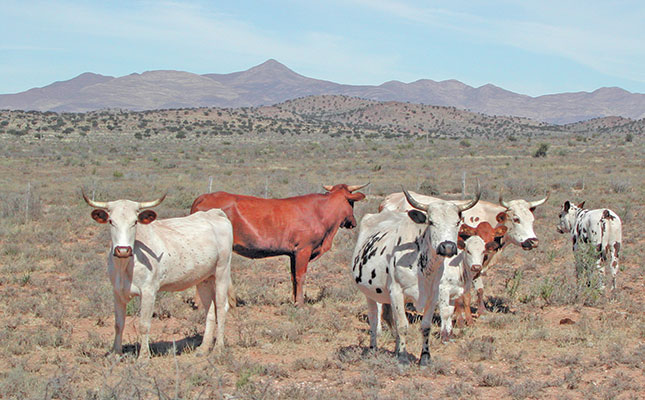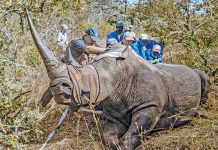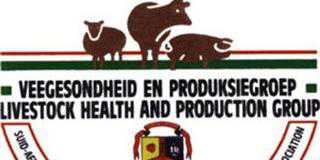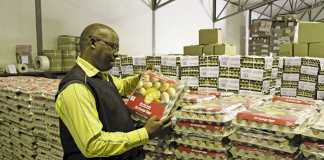
Photo: FW Archive
How was the study conducted?
Forty-eight working livestock farms were surveyed nationally to identify farmers practising a range of livestock farming approaches, from continuous and low density, to holistic planned grazing (HPG) and ultra-high-density grazing.
The farms covered more than 1 300km² across five biomes and a rainfall gradient of between 150mm/year and 850mm/ year.
Having identified 23 farms with high-density grazing and fence lines with neighbours having similar fire regimes, we tested the perception that intensive grazing sustains higher animal numbers, while increasing grass cover and reducing bare ground and woody plant cover, using remotely sensed (satellite) vegetation indices and on-the-ground inspections.
The available fence lines were clustered around the transition between the Grassland and Nama Karoo biomes.
An important selection criterion was that farms were managed under a particular grazing management for more than 15 years and have livestock, including cattle, sheep and/or goats where 75% of their diet comprised natural vegetation.
A few farms stocked a diversity of game in very low numbers (on average 2% of total farm LSUs).
Fourteen of the farms were selected as representing grazing management most strongly aligned to HPG or with very high grazing densities (highly rotational).
The rationale behind this was that these farms were likely to have more extreme management differences to their neighbours, and if grazing management has any effect on vegetation, it would be most evident at these fence lines.
Just to clarify, grazing density, sometimes referred to as stock density, is the number of livestock units per subunit of area (camp) at any point in time (a day or a week) on that rangeland.
For instance, two farms may have the same stocking rate, but different densities, depending on the number of camps in which stock are held per unit time. Stocking rate is simply the MLU/ha over the entire farm for that grazing season.
What were your main findings?
While it is widely accepted that planned grazing has many benefits, the claims that intensive grazing, including HPG, increases production and allows higher stocking density are unfounded.
More specifically, over 80% of the fence lines showed no difference in the number of animals that can be supported: bare ground, grass, woody cover or general plant vigour (greenness). The lack of vegetation differences in most cases is especially meaningful given that grazing densities were substantially different across fence lines.
Where high rotational grazing did affect vegetation cover, it tended to reduce it. It is unlikely that there is some critical threshold of grazing density not reached by farms in our study, given that the respondents were strongly aligned with some of the most intensive forms of rotational grazing practices, including high-density grazing, HPG and ultra-high-density grazing.
Besides the survey, we tested theoretical mechanisms that might underlie vegetation responses (or a lack thereof) to grazing management via an experimental trial.
In this trial, animal behaviour (grazing patterns, trampling, dunging, grazing) and weight gain did not differ between season-long grazing, four-camp grazing, or HPG.
Why is this study important?
Rangelands are ecologically complex and dynamic systems in which vegetation responses to some management practices are strongly influenced by subtle nuances of the management actions and by differences in climate, vegetation type, soil and other ecosystem properties.
There’s increasing pressure on rangeland managers to preserve ecosystem services flowing from the veld.
Anecdotal evidence of increased production or ecosystem services is often used in the advocacy of high-density grazing management, but claims seldom emerge under experimental manipulation where confounding variables such as rainfall are controlled.
Critics of academic studies often claim that experimental trials fail to capture the complexity of adaptive management decisions that bring about long-term vegetation changes at the landscape scale.
That is why we supplemented our experimental trials with a study of working farms, all of which had been consistently practising a certain grazing approach for many years.
The national survey, experimental trials, and global reviews conducted by our research group all lend weight to the growing global literature showing that continued advocacy for extreme forms of rotational grazing management is without basis and potentially risky.
Increasing grazing densities in arid veld seems especially unreasonable because it requires large investment not only in fencing, but also watering infrastructure, with little to no gain in productivity to offset these costs.
Our survey also confirmed that HPG practitioners were closely aligned to other forms of rotational grazing approaches, in contrast to the claim that HPG is unique.
Interestingly, other work within the research group indicates that corralling animals at high densities for a short time can be used for specific purposes, such as fertilisation, disturbance and stimulating plant growth when ground cover is low.
Thus, high stocking densities could well have restoration applications, but this requires further research.
How did grazing practices affect woody plants?
We tested whether intensive grazing would increase herbaceous growth while decreasing woody plant invasion by reducing selective grazing.
Other studies suggest that increasing browser densities combined with increasing fire frequencies is a useful tool to combat woody plant encroachment.
The principle is that both fires and browsers remove woody plant material, thus favouring grass growth and increasing grass-tree competition.
Since the selected fence lines had not burnt in 10 years, it was an opportunity to test whether increased livestock densities alone might reduce encroachment by invasive wattle or even indigenous woody plants. Most of the fence-line contrasts showed no significant effect of relatively high grazing densities on woody plant cover.
Increasing stocking rate and shifting livestock composition to include more browsers also appeared to have no effect on woody plant cover across the studied farms.
The lack of effect of livestock density on woody plant cover at this local scale was likely due to the absence of recent fires, but also because the fence lines were in areas with low overall woody cover.
An effect of grazing density may only emerge at higher woody cover and in combination with fire. This remains an interesting topic, especially given the increase in woody plant encroachment over sub-Saharan Africa with climate change and trends of fire suppression and reduced numbers of browsing animals, including wildlife.
Email Dr Heidi-Jayne Hawkins at [email protected].
Read ‘National veld survey raises questions about rotational grazing effects’, by Hawkins, Dr Zander Venter, and Prof Michael Cramer.












